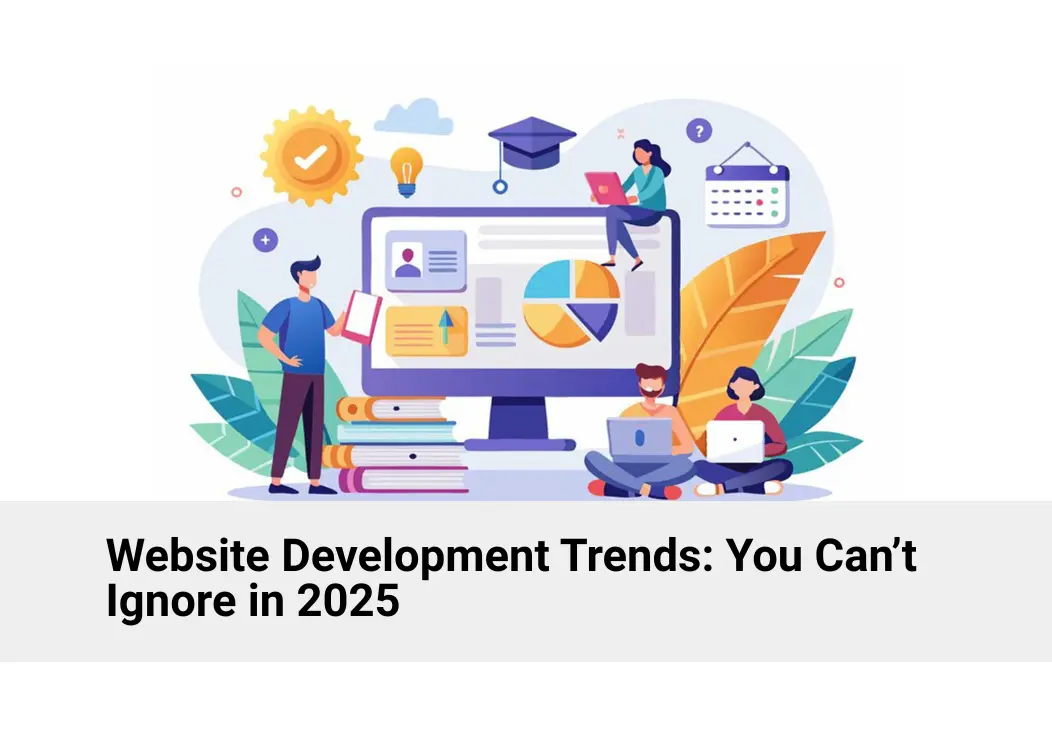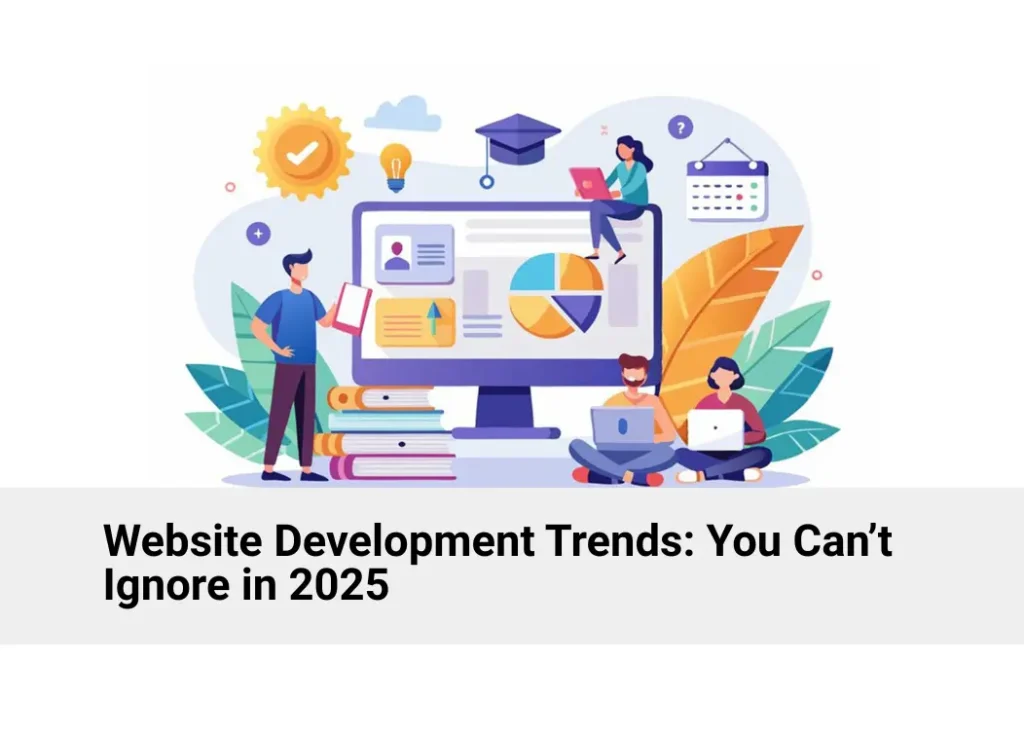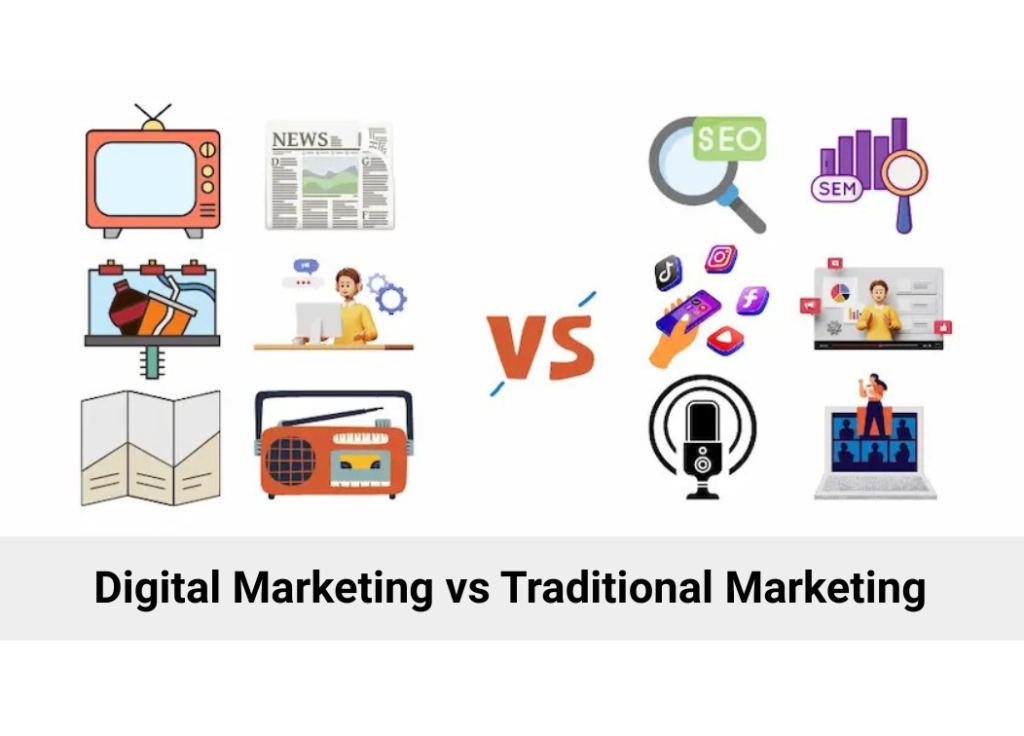The digital landscape continues to evolve rapidly, and 2025 is set to be a defining year for the web. Businesses, developers, and brands that want to stay ahead must understand the website development trends 2025 shaping the online experience.
From responsive design enhancements to the rise of AI-driven development tools, the future of web development is centered around performance, personalization, and innovation. This year, websites are no longer just online platforms — they are intelligent digital ecosystems designed to attract, engage, and convert users seamlessly.
In this article, we explore the most impactful web development trends every business and developer should watch closely in 2025, along with best practices that can future-proof your digital presence.
1. Responsive Web Design Trends: Moving Beyond Mobile-Friendly
Responsive design has been a best practice for years, but in 2025, it’s evolving into something far more advanced. The focus has shifted from mobile optimization to experience optimization.
Modern users interact with websites across multiple devices — smartphones, tablets, wearables, and even smart TVs. As a result, developers must prioritize responsive web design trends that ensure consistent usability, performance, and accessibility everywhere.
Key Developments in Responsive Design
Adaptive Layouts: Websites now use fluid grids and CSS container queries to automatically adapt to varying screen sizes and orientations.
Accessibility-Centered Design: Inclusive web design is essential. Voice navigation, color contrast tools, and keyboard accessibility enhance the overall experience.
Speed and Performance Optimization: Google’s Core Web Vitals remain a ranking factor, making fast-loading, lightweight websites a must for SEO and engagement.
For modern businesses, this evolution represents one of the best website development practices — creating websites that prioritize both aesthetics and functionality for every user, on every device.
2. Front-End Development Trends: Speed, Interactivity, and Automation
The front-end development ecosystem continues to expand at an unprecedented pace. In 2025, developers are focusing on frameworks and technologies that combine performance, flexibility, and scalability.
Emerging Front-End Frameworks
Next.js, Nuxt.js, and Astro are leading the charge in static and server-side rendering, ensuring faster load times and enhanced SEO.
Micro Frontends are becoming more common in enterprise environments, allowing teams to build, test, and deploy different parts of a web app independently.
Enhanced Interactivity and UX
The front-end development trends in 2025 emphasize intuitive design and dynamic experiences. Expect to see:
Web Animations API and Motion UI for engaging visuals.
AI-generated design suggestions that adapt based on user behavior.
Automated testing and debugging through machine learning tools that reduce human error and development time.
As AI in web development continues to advance, automation in front-end workflows is improving code efficiency, reducing bugs, and freeing up developers to focus on creativity and strategy.
3. WordPress Development Trends: Smarter, Faster, and More Flexible
With WordPress powering over 40% of the web, its ecosystem continues to innovate to meet modern digital demands. The WordPress development trends in 2025 highlight the platform’s evolution from a traditional CMS to a flexible, API-driven solution for both startups and large enterprises.
Headless WordPress and Jamstack Integration
Headless WordPress allows developers to separate the front-end from the back-end using APIs. This architecture delivers lightning-fast performance, enhanced scalability, and seamless integration with modern front-end frameworks like React or Vue.
Custom Gutenberg Enhancements
The Gutenberg block editor continues to evolve, offering more customization options and streamlined editing experiences. Developers can now create reusable dynamic blocks that reduce design time and maintain consistency across projects.
Performance and Security
WordPress sites are adopting caching technologies, CDN integrations, and advanced security measures to ensure optimal performance and protection against cyber threats.
For startups, the web development trends for startups in 2025 center around flexibility, cost-effectiveness, and scalability — all of which WordPress continues to provide.
4. AI in Web Development: Shaping the Future of Digital Experiences
Artificial Intelligence is redefining the future of web development. From automated coding tools to AI-powered UX personalization, AI has become an integral part of modern website design and development.
AI-Driven Development Tools
Platforms like GitHub Copilot, Tabnine, and Builder.io are empowering developers to write cleaner, faster code with real-time AI suggestions. AI tools also help in detecting vulnerabilities, testing website performance, and predicting design outcomes.
Personalized User Experiences
AI enables websites to deliver real-time personalization based on user behavior, demographics, and preferences. This can include tailored content, product recommendations, and even dynamic UI adjustments for different user segments.
Chatbots and Virtual Assistants
Intelligent chatbots are transforming customer support by offering 24/7 automated responses, lead qualification, and user assistance. Integrating conversational AI enhances engagement and improves the overall customer journey.
As we move deeper into 2025, AI in web development is not just an enhancement — it’s becoming a necessity for competitive digital performance.
5. The Future of Web Development: Modernization Through Technology
The future of web development lies in adopting cutting-edge technologies that make websites faster, smarter, and more efficient. This modernization is driven by an emphasis on security, interactivity, and performance.
Progressive Web Apps (PWAs)
PWAs continue to blur the line between websites and native apps. They offer offline access, push notifications, and app-like performance, improving user engagement without the cost of app development.
Serverless Architecture
Serverless computing is gaining traction among developers. It eliminates traditional server management, allowing for faster deployment, reduced costs, and easier scaling.
Motion UI and Micro-Interactions
Modern websites rely heavily on micro-animations to guide users and create engaging experiences. Subtle transitions and movement can significantly enhance usability and storytelling.
Low-Code and No-Code Platforms
The rise of low-code and no-code tools is democratizing web development. Businesses can now create complex, responsive websites without extensive coding knowledge — empowering teams to innovate faster.
These modern website development technologies are reshaping how businesses interact with their audiences and ensuring that innovation remains at the heart of digital transformation.
6. Latest Web Development Technologies: Security, Performance, and Sustainability
As technology evolves, so do the challenges. Developers in 2025 are adopting the latest web development technologies that prioritize security, speed, and sustainability.
Enhanced Cybersecurity
With cyberattacks becoming more sophisticated, developers are implementing advanced security frameworks, SSL automation, and multi-factor authentication. Website security is no longer optional — it’s a core component of development.
Green Hosting and Sustainable Development
Sustainability is a growing concern in tech. Green hosting providers are optimizing server energy use and promoting eco-friendly data centers. Developers are also minimizing code bloat to reduce digital carbon footprints.
WebAssembly and Edge Computing
WebAssembly enables high-performance web applications that run nearly as fast as native apps, opening new possibilities for complex web platforms. Combined with edge computing, it brings data closer to users, improving response times and reliability.
These advancements ensure that web development in 2025 is not only more powerful but also more responsible.
7. Web Development Trends for Startups in 2025: Innovation Meets Agility
Startups thrive on innovation and adaptability, and the web development trends for startups in 2025 reflect exactly that.
Emerging companies are leveraging modern frameworks, cloud-based infrastructure, and automation tools to build scalable, future-ready web solutions.
Cloud Integration
Startups are adopting hybrid and multi-cloud strategies to ensure flexibility, scalability, and cost efficiency. This also supports faster development cycles and improved data management.
Data-Driven Development
Using analytics and AI, startups can now make informed design and development decisions. Every layout, color, and interaction can be optimized based on real-time data insights.
Collaborative Development
With remote work and global teams becoming the norm, cloud-based collaboration tools like GitHub, Figma, and Jira are essential to maintain productivity and alignment.
For startups, success in 2025 will depend on how effectively they integrate these web development trends to create user-focused, high-performance websites that scale as they grow.
Conclusion: Adapting to the Future of Website Development
As we look ahead, one thing is clear — the website development trends 2025 are defining a new era of digital innovation.
Businesses that embrace these changes will be better equipped to meet evolving user expectations, improve performance, and stay competitive in the digital marketplace.
Whether it’s integrating AI in web development, optimizing for responsive web design trends, or adopting modern website development practices, the key to success lies in adaptability and continuous learning.
If you’ve been wondering what are the top website development trends in 2025 — now you know the direction the web is heading. The next step is to take action.
Ready to Build the Future?
Your website is more than an online presence — it’s your brand’s digital foundation.
Stay ahead of the curve by implementing the latest web development trends that drive performance, engagement, and growth.
Let’s create a future-ready website that helps your business lead in 2025 and beyond. Contact Genxe today to get started.











